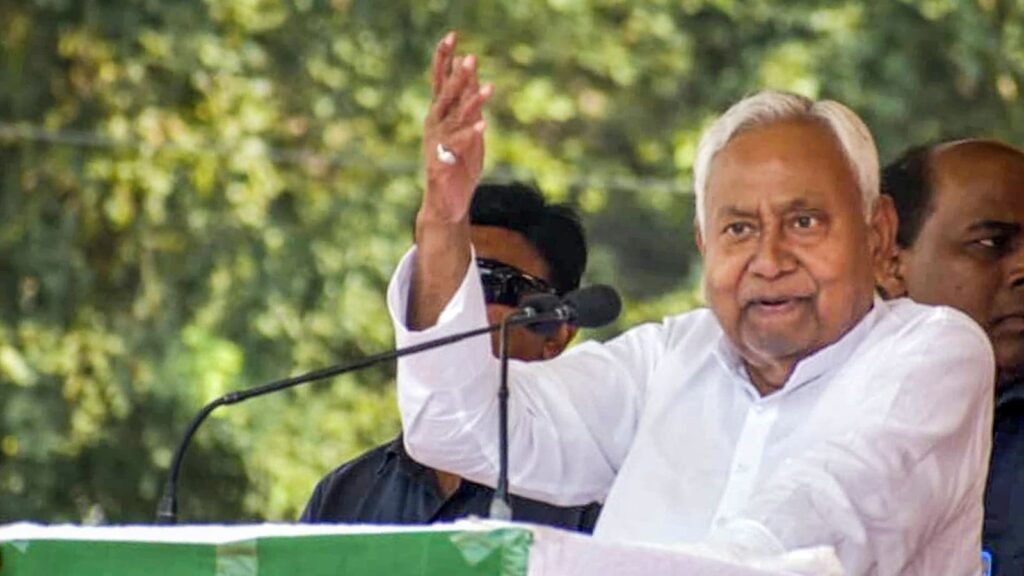Amid the Bihar leaders who rose out of the Jayaprakash Narayan movement, Nitish Kumar didn’t have the charisma of Lalu Prasad, the vote base of Ram Vilas Paswan, or the party organisation of the late Sushil Kumar Modi. On Friday, again defying the assumptions about him, the JD(U) supremo led his party to a spectacular win – nearly doubling its seats from 2020 – and ensuring that his 20-year unbroken run, making him Bihar’s longest-serving Chief Minister, will continue.
The run-up to the Assembly elections was marked by chatter about Nitish’s future. His government’s initiatives such as free electricity up to 125 units and a Mukhyamantri Mahila Rojgar Yojana, under which Rs 10,000 was deposited into the accounts of more than 1 crore women as the first instalment, were seen as signs of desperation. Detractors said Nitish appeared to have ditched his opposition to freebies and direct doles, others talked about his failing health, and many more about the growing ambitions of partner BJP.
Those close to Nitish, however, insisted that the impressions were misplaced. A source close to the CM House pointed out his “contributions” even in the electrical subsidy scheme, for example, such as suggesting solar panels on rooftops as an incentive. As the campaign kicked into gear, and Nitish took on the lion’s share of campaigning, addressing 84 public meetings, the murmurs about his health got overtaken by increasingly loud voices of endearment for the 74-year-old CM on the ground.
Nowhere were those voices louder than among women, the biggest beneficiaries of the Nitish reign’s schemes. Even the large numbers unhappy about the lack of employment opportunities in Bihar, forcing its youth to migrate for work, made it a point to acknowledge Nitish’s “contributions”.
The biggest contribution, by consensus, was Nitish’s work in taking Bihar out of the Lalu Prasad regime’s long shadow of “jungle raj” and “patronage in governance”. After taking over in 2005, Nitish worked first on getting the basics right: from law and order, to roads, schools and hospitals.
This helped Nitish carve out a unique space for himself in a state where politics is determined by caste, and where his community – the Kurmis – comprises less than 4% of the population. Additionally, the JD(U) supremo carved out a base for himself of the Extremely Backward Classes – a subset of non-Yadav OBCs and Mahadalits, plus women, together adding up to more than 20% of the population.
A JD(U) leader called the “caste-neutral constituency of women” Nitish’s biggest strength. His women schemes included, apart from free bicycles for girl students, 50% reservation in panchayats, prohibition and, now, the rojgar yojana. This election saw women shatter all voting records, beating men both in turnout and absolute numbers – putting the shadow cast by the Special Intensive Revision drive, which saw the deletion of more women voters than men, firmly aside.
There was concern how an entire generation of voters, with no memory of the Lalu-Rabri regime, would vote and whether Nitish could convince them that he still was their best bet.
The JD(U) highlighted the Nitish government’s measures in response, such as “an engineering college in each of the 38 districts”, “a Youth Commission to suggest measures to solve the problems of youth”; “a monthly allowance of Rs 1,000 to those between 18 and 25 years of age for two years”; and “a credit card scheme for students of professional courses”.
If the enthusiastic turnout hints Nitish succeeded in this, the EBCs appear to have stayed on too, despite the JD(U) losing several top EBC and Mahadalit leaders in recent years.
Now, as he prepares to be sworn in as CM for the 10th time, Nitish is visibly slowing down. The alert and cautious politician, with an enviable grasp on facts and figures, often trails off mid-sentence. His interactions with journalists at his Vidhan Sabha office have been curtailed since 2019, and he has shunned media interviews.
The JD(U) supremo is increasingly dependent on a trusted team of advisors now. Apart from old-timers such as N K Singh and K C Tyagi, his inner circle now prominently includes Sanjay Kumar Jha, a former BJP man.
As for his relationship with the BJP, which this time pressured the JD(U) into yielding the same seats to the party as it (101), sources say Nitish is secure. JD(U) leaders talk of the BJP having learnt its lesson after even the Modi wave of 2014 failed to work for it in the 2015 Assembly elections, when the Nitish-RJD Mahagathbandhan alliance won 178 seats out of 243.
Nitish did return to the NDA after that, and made some more switches, before the last one in January 2024. Now, said a JD(U) source, he is here to stay. “Nitish has made sure that the BJP knows it has no life without him. We returned to the NDA fold on our terms.”
So even as he conceded 101 seats to the BJP in vote-sharing, a resolute Nitish ensured the JD(U) wasn’t saddled with constituencies it did not want, and got the BJP to “rein in” LJP (RV) chief Chirag Paswan. The BJP was also forced to give in on the question of the CM face.
Now, it is entirely Nitish’s call – whether he stays or chooses a replacement, if and when health becomes a challenge.
A shopkeeper in a Seemanchal village told The Indian Express during the campaign, “In Mahabharata, Bhishma Pitamah was blessed with ichha mrityu (death at one’s will); in Bihar, Nitish has the blessing of iccha shashan (ruling Bihar as long as he wants).”
For now, the Bhishma Pitamah prevails.

